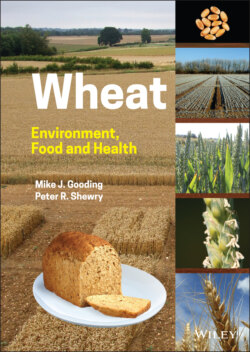Читать книгу Wheat - Peter R. Shewry - Страница 33
1.4.2 The Cultural Significance of Bread
ОглавлениеIn view of the life or death importance of wheat, it is not surprising that it has become firmly entrenched in both culture and religion. One of the most culturally embedded types of bread is non (Figure 1.19g), a leavened bread which is consumed throughout Central Asia. It is cooked on the wall of a clay oven (tandoor) and stamped with a wooden tool studded with pins (a chekich) to raise a pattern. It has a special status in Central Asian culture; it must be kept upright and cannot be placed on the ground or thrown away. It must be torn by hand rather than cut. At a wedding ceremony, the bride and groom both take a bite from a non and finish it the next day as part of their first meal as man and wife. Similarly, when a soldier goes to war, he takes a bite of non as he leaves. His family will then hang the bread up and only take it down once he is safely home. Uzbek‐style non is old enough to have been mentioned in the Epic of Gilgamesh (tales of the ruler of the Sumerian Kingdom of Uruk), dating from over 4000 BP.
Many readers will be aware of the significance of wheat and bread in Judaism and Christianity (Jacob 1977); both are mentioned in the Old and New Testaments of the Christian Bible. The Jews probably learned to make leavened bread during their time in Egypt; unleavened bread (matzos) is used at Passover to celebrate their escape, as a symbol that they would not have had time to make leavened bread before their flight. Unleavened bread was also used for sacrifices in the Temple; this may represent the nomadic origin of the Jews and/or the fact that early sourdough bread would deteriorate rapidly if not eaten. The major symbolic role of bread in Christianity arises from the Last Supper; it represents (in Protestant churches) or becomes (in Catholic and Orthodox churches) the body of Christ during the Eucharist/Holy Communion.
Figure 1.19 Examples of breads consumed around the world. (a) Turkish frankala hearth bread; (b) Yemeni maloung flat bread; (c) Chinese steamed bread; (d) Indian chapati; (e) Arabic pocket bread; (f) Iranian sangak; (g) Central European non; (h), Iranian lavash.
Source: All images from the author's collection except (d), which was provided by Dr. Anil Gaddameddi (Hyderabad, India).
